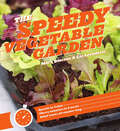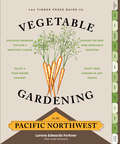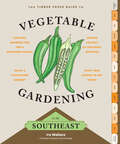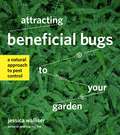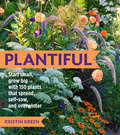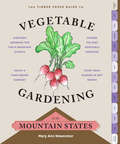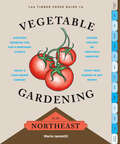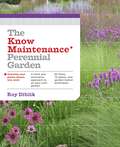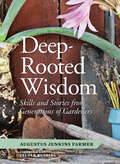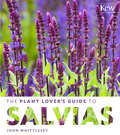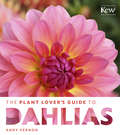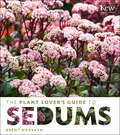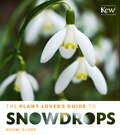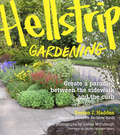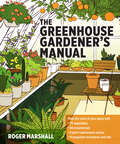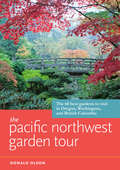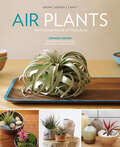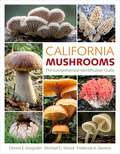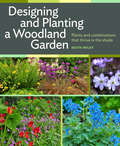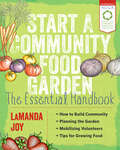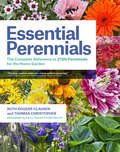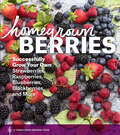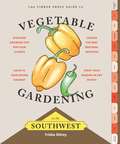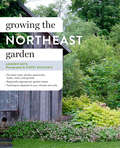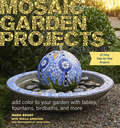- Table View
- List View
The Speedy Vegetable Garden
by Mark Diacono Lia LeendertzTypically, vegetable gardening is about the long view: peas sown in spring aren't harvested until summer, and tomatoes started indoors in February can't be eaten until July. But it's not true for all plants. Some things can be planted and eaten in weeks, days, even hours.The Speedy Vegetable Garden highlights more than 50 quick crops, with complete information on how to sow, grow, and harvest each plant, and sumptuous photography that provides inspiration and a visual guide for when to harvest. In addition to instructions for growing, it also provides recipes that highlight each crop’s unique flavor, like Chickpea sprout hummus, stuffed tempura zucchini flowers, and a paella featuring calendula. Sprouted seeds are the fastest. Microgreens can be harvested in weeks: cilantro, 14 days after planting; arugula and fennel in 10 days. And a handful of vegetable varieties grow more quickly than their slower relatives, like dwarf French beans (60 days), cherry tomatoes (65 days), and early potatoes (75 days).The Speedy Vegetable Garden puts fresh, seed-to-table food at your fingertips, fast!
The Timber Press Guide to Vegetable Gardening in the Pacific Northwest: A Timber Press Guide (Regional Vegetable Gardening Series)
by Lorene Edwards ForknerThere is nothing more regionally specific than vegetable gardening. What to plant, when to plant it, and when to harvest are unique decisions based on climate, weather, and first and last frost.The Timber Press Guide to Vegetable Gardening: Pacific Northwest is a growing guide that truly understands the unique eccentricities of the Northwest growing calendar, covering Oregon, Washington, southeastern Alaska, and British Columbia. The month-by-month format makes it perfect for beginners and accessible to everyone—you can start gardening the month you pick it up. Starting in January? The guide will show you how to make a seed order, plan crop rotations and succession plantings, and plant a crop of microgreens. No time to start until July? You can start planting beets, carrots, chard, kale, parsnips, and spinach for an early fall harvest.
The Timber Press Guide to Vegetable Gardening in the Southeast (Regional Vegetable Gardening Series)
by Ira WallaceGrowing vegetables requires regionally specific information—what to plant, when to plant it, and when to harvest are based on climate, weather, and first frost. The Timber Press Guide to Vegetable Gardening in the Southeast tackles this need head on, with regionally specific growing information written by local gardening expert, Ira Wallace. This region includes Alabama, Arkansas, Florida, Georgia, Kentucky, Louisiana, Maryland, Mississippi, North Carolina, South Carolina, Tennessee, Virginia, and West Virginia. Monthly planting guides show exactly what you can do in the garden from January through December. The skill sets go beyond the basics with tutorials on seed saving, worm bins, and more.
Attracting Beneficial Bugs to Your Garden: A Natural Approach to Pest Control
by Jessica WalliserWinner of the American Horticultural Society Book Award Insects are indeed valuable garden companions, especially the assassin bugs, damsel bugs, stink bugs, and other predatory carnivores that eat the insects that dine on your garden. Attracting Beneficial Bugs to Your Garden is a book about bugs and plants, and how to create a garden that benefits from both. In addition to information on companion planting and commercial options for purchasing bugs, there are 19 detailed bug profiles and 39 plant profiles. These profiles include a description, a photograph for identification, an explanation of what they can do to support pest control. Design plans show how to create a border specifically for the natural, sustainable inclusion of beneficial bugs in your garden.
Plantiful: Start Small, Grow Big with 150 Plants That Spread, Self-Sow, and Overwinter
by Kristin Green“Thrifty gardeners take note: the bucks saved on plant purchases will pay back the purchase price of Plantiful with dividends.” —Tovah Martin, author of The Unexpected Houseplant Whoever coined the phrase “money doesn’t grow on trees” must not have been a resourceful gardener. Plantiful shows you how to have an easy, gorgeous garden packed with plants by simply making the right choices. Kristen Green highlights plants that help a garden quickly grow by self-sowing and spreading and teaches you how to expand the garden and extend the life of a plant by overwintering. The book features plant profiles for 50 self-sowers (including columbine, milkweed, and foxglove), 50 spreaders (such as clematis, snow poppy, and spearmint), and 50 plants that overwinter (including lemon verbena, begonia, and Chinese hibiscus). Additional gardening tips, design ideas, and inspirational photos will motivate and inspire gardeners of all levels.
The Timber Press Guide to Vegetable Gardening in the Mountain States (Regional Vegetable Gardening Series)
by Mary Ann NewcomerGrowing vegetables requires regionally specific information—what to plant, when to plant it, and when to harvest are based on climate, weather, and first frost. The Timber Press Guide to Vegetable Gardening in the Mountain States tackles this need head on, with regionally specific growing information written by local gardening expert, Mary Ann Newcomer. This region includes Idaho, Montana, Wyoming, Utah, Colorado, eastern Washington and Oregon, northern Nevada, and the southernmost parts of Alberta and Saskatchewan. Monthly planting guides show exactly what you can do in the garden from January through December. The skill sets go beyond the basics with tutorials on seed saving, worm bins, and more.
The Timber Press Guide to Vegetable Gardening in the Northeast (Regional Vegetable Gardening Series)
by Marie IannottiGrowing vegetables requires regionally specific information—what to plant, when to plant it, and when to harvest are based on climate, weather, and first frost. The Timber Press Guide to Vegetable Gardening in the Northeast tackles this need head on, with regionally specific growing information written by local gardening expert, Marie Iannotti. This region includes Connecticut, Delaware, Maine, Massachusetts, New Hampshire, New Jersey, New York, Pennsylvania, Rhode Island, and Vermont. The southernmost parts of Ontario, New Brunswick, Novia Scotia, and Quebec are also included. Monthly planting guides show exactly what you can do in the garden from January through December. The skill sets go beyond the basics with tutorials on seed saving, worm bins, and more.
The Know Maintenance Perennial Garden
by Roy Diblik“A veritable goldmine for gardeners.” —Plant Talk We’ve all seen gorgeous perennial gardens packed with color, texture, and multi-season interest. Designed by a professional and maintained by a crew, they are aspirational bits of beauty too difficult to attempt at home. Or are they?The Know Maintenance Perennial Garden makes a design-magazine-worthy garden achievable at home. The new, simplified approach is made up of hardy, beautiful plants grown on a 10x14 foot grid. Each of the 62 garden plans combines complementary plants that thrive together and grow as a community. They are designed to make maintenance a snap. The garden plans can be followed explicitly or adjusted to meet individual needs, unlocking rich perennial landscape designs for individualization and creativity.
Deep-Rooted Wisdom: Skills and Stories from Generations of Gardeners
by Augustus Jenkins FarmerWe have begun to lose some of the most important skills used by everyday gardeners to create beautiful, productive gardens. With a personality-driven, engaging narrative, Deep Rooted Wisdom teaches accessible, commonsense skills to a new generation of gardeners. Soulful gardener, Augustus Jenkins Farmer, profiles experienced and up-and-coming gardeners who use these skills in their own gardens. Enjoy this chance to get planting, propagation, and fertilizing knowledge handed down directly from the experts in the field.
The Plant Lover's Guide to Salvias (The Plant Lover’s Guides)
by John WhittleseySalvias are available in a huge range of sizes, colors, foliage, and hardiness, with over 900 species and hundreds of hybrids. Salvia’s popularity stems from how easy they are to grow, their multiple medicinal and culinary uses, and the vibrancy of their blooms that cover every color in the spectrum from white to nearly black. The Plant Lover’s Guide to Salvias features everything you need to know to grow this vibrant and fragrant plant. Plant profiles of 150 varieties highlight each plant’s type, habitat, size, hardiness, origin, cultivation, and use in the landscape. Additional information includes tips on design, how to grow and propagate salvia, where to view them in public gardens, and where to buy them.
The Plant Lover's Guide to Dahlias (The Plant Lover’s Guides)
by Andy VernonDahlias are the showgirls of the garden. A favorite of floral and landscape designers, they come in a wide range of jewel-like colors—rich reds and vibrant oranges, shocking pinks—and an engaging variation of form and petal shape. The Plant Lover’s Guide to Dahlias is packed with everything you need to know to grow these fantastic flowers including tips on using dahlias in garden design, growth and propagation information, and lists of where to buy the plants and where to view them in public gardens. The bulk of the book is devoted to profiles for over 200 varieties, organized by color, with information on type, height, and spread. Gorgeous color photographs bring the plants to life.
The Plant Lover's Guide to Sedums (The Plant Lover’s Guides)
by Brent HorvathSedums are most popular flowering succulent. They range from groundcovers to large border perennials and are often included in green roof and vertical garden design because of their visual interest and drought tolerance. Sedums changes dramatically with the seasons—in fall, they are rich and earthy while in summer their flowers come in vibrant shades of pink and yellow. The Plant Lover’s Guide to Sedums includes everything you need to know about these beautiful gems. Plant profiles highlight 150 of the best varieties to grow, with information on zones, plant size, soil and light needs, origin, and how they are used in the landscape. Additional information includes designing with sedums, understanding sedums, growing and propagating, where to buy them, and where to see them in public gardens.
The Plant Lover's Guide to Snowdrops (The Plant Lover’s Guides)
by Naomi SladeSnowdrops have a delicate, quiet beauty. Their white bell-shaped petals are striking alone and in a swath, and they are a harbinger of spring. The Plant Lover’s Guide to Snowdrops is the first book to make this group of bulbs accessible to the home gardener. It features profiles of 60 hybrids, species, and cultivars, with information on flowering time, distinguishing features, and ease of cultivation. It addition, it shows how to design with snowdrops, and how to grow and propagate them, also offering tips on where to see snowdrops in public gardens and where to buy them. Each Plant Lover’s Guide in the series is supported by lush, photo-driven design, featuring the most beloved plants and valued expertise of the gardening world in a visual, comprehensive resource.
Hellstrip Gardening: Create a Paradise between the Sidewalk and the Curb
by Evelyn Hadden Joshua McCulloughThe hellstrip—also known as a boulevard, meridian, and planting strip—is finally getting the attention it deserves! Gardeners everywhere are taking advantage of the space to add curb appeal to their homes, expand the size of their gardens, and conserve more resources. Hellstrip Gardening is the first book to show you exactly how to reclaim these oft-ignored spaces by determining the city and home owner's association rules, choosing plants that thrive in tough situations, designing pathways for accessibility, and much more. Gorgeous color photographs of hellstrip gardens across the country offer inspiration and visual guidance to anyone ready to tackle this final frontier.
The Greenhouse Gardener's Manual
by Roger MarshallImagine biting into a fresh, juicy tomato straight from the vine in the middle of winter or growing a collection of succulents and cacti the coldest parts of the world. In The Greenhouse Gardener's Manual, Roger Marshall providesevery tool and technique you need to successfully grow edibles and ornamentals in a well-maintained greenhouse. Marshall offers insight to choose the right greenhouse, create a healthy environment, start seeds and propagate, and maintain your greenhouse.
The Pacific Northwest Garden Tour: The 60 Best Gardens to Visit in Oregon, Washington, and British Columbia
by Donald Olson“Your must-visit list of Northwest gardens is finally organized and illustrated.” —Sunset Oregon, Washington, and British Columbia have a wealth of top-notch public gardens. In The Pacific Northwest Garden Tour veteran travel writer Donald Olson highlights sixty of the most outstanding options and provides all the information you need to make the most of your visit. This gorgeous and useful guide includes cherished public gardens and a handful of the most groundbreaking nurseries. Packed with memorable stories and stunning photography, it is a fantastic garden tour that only the scenic Pacific Northwest can provide.
Air Plants: The Curious World of Tillandsias
by Zenaida Sengo Caitlin Atkinson“In this beautiful book, artist Zenaida Sengo has provided inspiration for designing and living with tillandsias.” —Flora GrubbAir Plants, by Zenaida Sengo shows how simple and rewarding it is to grow, craft, and design with these modern beauties. Decorating with air plants is made easy with stunning photographs that showcase ideas for using them mounted on walls, suspended from the ceiling, as living bows and jewelry, as screens, and in unique containers, like leather pouches, dishes, and baskets. Six step-by-step projects include a wood mount, a wall hook, lasso-and-hook wiring, a ceramic-frame garden, and three unique terrariums.
California Mushrooms: The Comprehensive Identification Guide
by Michael G. Wood Dennis E. Desjardin Frederick A. StevensWinner of the CBHL Award of Excellence California is one of the most ecologically rich and diverse regions of North America, and home to hundreds of species of mushrooms. In California Mushrooms, mycologist experts Dennis Desjardin, Michael Wood, and Fred Stevens provide over 1100 species profiles, including comprehensive descriptions and spectacular photographs. Each profile includes information on macro- and micromorphology, habitat, edibility, and comparisons with closely related species and potential look-alikes. Although the focus of the book is on mushrooms of California, over 90% of the species treated occur elsewhere, making the book useful throughout western North America. This complete reference covers everything necessary for the mushroom hunter to accurately identify over 650 species.
Designing and Planting a Woodland Garden: Plants and Combinations that Thrive in the Shade
by Keith WileyFrom the creator of "one of the most exciting and innovative gardens in Britain today" With their moss-covered stones, towering trees, and pockets of quiet shade, woodlands have a romantic power unlike anything else. Whether your garden is currently open and sunny, or on the small side, you can capture that sylvan atmosphere with carefully chosen trees and shade-loving plants. In Designing and Planting the Woodland Garden, Keith Wiley explains how to combine plants in natural, self-supporting colonies. His hand-picked selection of unexpected collectables—shrubs, perennials, bulbs, ferns, and grasses—mingle with garden favorites to create fabulous effects in all seasons.
Start a Community Food Garden: The Essential Handbook
by LaManda JoyRecommended by the American Community Gardening Association Community gardening enhances the fabric of towns and cities through social interactions and accessibility to fresh food, creating an enormously positive effect in the lives of everyone it touches. LaManda Joy, the founder of Chicago’s Peterson Garden Project and a board member of the American Community Gardening Association, has worked in the community gardening trenches for years and brings her knowledge to the wider world in Start a Community Food Garden. This hardworking guide covers every step of the process: fundraising, community organizing, site sourcing, garden design and planning, finding and managing volunteers, and managing the garden through all four seasons. A section dedicated to the basics of growing was designed to be used by community garden leaders as an educational tool for teaching new members how to successfully garden.
Essential Perennials: The Complete Reference to 2700 Perennials for the Home Garden
by Alan L. Detrick Thomas Christopher Ruth Rogers ClausenEssential Perennials focuses on what every gardener needs to know to choose from the thousands of perennials available, and care for the ones you already have. This A-to-Z guide is packed with more than 2,700 plants, with each entry listing flower color, bloom time, foliage characteristics, size, and light and temperature requirements. Each profile is supported by stunning color photography that showcases the flower and foliage that make each plant unique.
Homegrown Berries: Successfully Grow Your Own Strawberries, Raspberries, Blueberries, Blackberries, and More
by Timber PressEnjoy delicious, nutritious berries from your own backyard! What says summer more than a bowl full of fresh berries? How about a yard full of them? Homegrown Berries covers the information you need to know about the process from planting to picking. You’ll learn the best varieties of strawberries, raspberries, blackberries, blueberries, gooseberries, currants, and elderberries for you, how to fit them into your landscape (including in borders and containers), and how to maintain them for peak harvest. Summer just got sweeter!
Timber Press Guide to Vegetable Gardening in the Southwest (Regional Vegetable Gardening Series)
by Trisha ShireyThere is nothing more regionally specific than vegetable gardening—what to plant, when to plant it, and when to harvest are decisions based on climate, weather, and first frost. The Timber Press Guide to Vegetable Gardening in the Southwest, by regional expert Trisha Shirey, focuses on the unique eccentricities of the Southwest gardening calendar, which include extreme temperatures and low rainfall. The month-by-month format makes it perfect for beginners and accessible to everyone— gardeners can start gardening the month they pick it up. Perfect for home gardeners in Arizona, Nevada, New Mexico, Oklahoma, Texas, Utah, eastern California, and southern Colorado.
Growing the Northeast Garden: Regional Ornamental Gardening (Regional Ornamental Gardening Series)
by Andrew Keys Kerry MichaelsPlant selection and garden style are deeply influenced by where we are gardening. To successfully grow a range of beautiful ornamental plants, every gardener has to know the specifics of the region’s climate, soil, and geography. Gardeners in the northeast are lucky—the regular summer rain, gorgeous summer blooms, and stunning fall color make it an ideal place to garden. But there are drawbacks, like hot and humid summers, bitterly cold winters, and mosquitos. TThe practical and beautiful Growing the Northeast Garden starts with a comprehensive overview of the weather and geography of the area, along with regionally specific advice on zones, microclimates, soil, pests, and maintenance. Profiles of the best trees, shrubs, perennials, annuals, and bulbs offer hundreds of plant suggestions, along with complete information on growth and care.
Mosaic Garden Projects: Add Color to Your Garden with Tables, Fountains, Bird Baths, and More
by Mark Brody Sheila Ashdown“This thorough guide to techniques, tools, and materials is filled with expert tips and tricks. The detailed project instructions will inspire you to make your own mosaicked mark on the landscape.” —Lorene Edwards Forkner, author of Handmade Garden Projects In Mosaic Garden Projects, artist Mark Brody walks step-by-step through the creation of 25 decorative yet functional projects. With simple ideas like address signs and stepping stones to more complex projects such as an orb fountain, Brody also includes with a primer on the fundamentals of mosaic and information on the range of possible materials. Project templates are included along with instructions on how to scale each project. Mosaic Garden Projects is packed with inspiration that will brighten the garden all year long.
